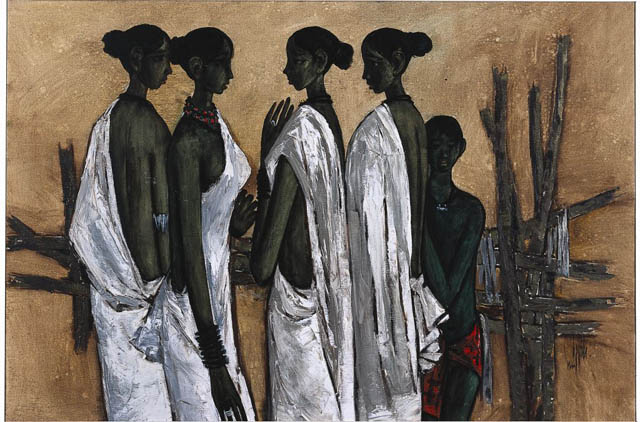
Dr. Sunanda Gaur’s everyday work world is about ill health and disease, a world of muted colors where AIDS is the 800-pound gorilla. As a pediatrician who specializes in infectious diseases, she is on the faculty at Robert Wood Johnson Medical School, which is part of the University of Medicine and Dentistry of New Jersey. She is also a researcher and the director of the pediatric AIDS program.The children that she gets to see are not the ones with the sniffles and tummy aches – but ones who have heavyweight illnesses.
Little wonder then that she chooses to spend her leisure hours in quite a different world, a world of myriad colors, a hundred imaginary spheres of the mind and soul: Sunanda and her husband Umesh, who is president of Gaur Asset Management, a financial company, own what is reputed to be one of the largest collections of contemporary Indian art in the U.S, over a hundred works of art encompassing all the noted names from Husain to Raza to Souza to Tyeb Mehta.
The couple was named amongst the Top 100 Collectors of Art in America by Art & Antiques magazine. They were also instrumental in organizing ‘India: Contemporary Art from Northeastern Private Collections’ at the Zimmerli Art Museum at Rutgers’, believed to be the largest exhibition on contemporary art in the U.S. since the Smithsonian’s 1982 exhibition. Just last year they helped organize the landmark exhibition of contemporary Indian art at the Newark Museum in 2008.
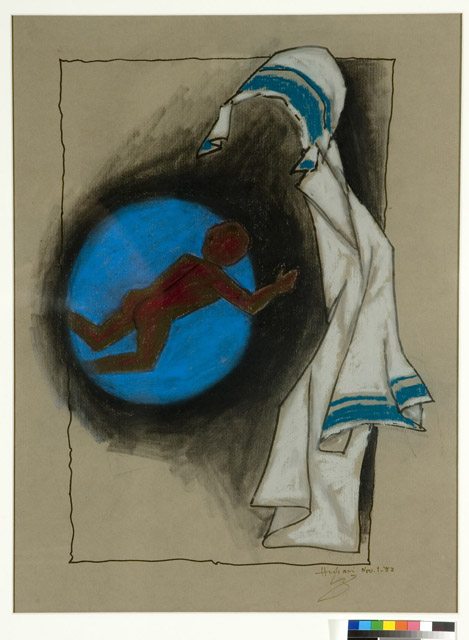
“The Sunanda and Umesh Gaur Collection constitutes one of the finest groupings of Post-Independence Indian art, because of its depth and media,” says Corliss Cavalieri, Director of Robeson Gallery. “The paintings exhibited are a delicate look into the soul of a private collection.”
Interestingly enough, the Gaurs had a late blooming interest in art. Sunanda, who hails from U.P., trained at King George’s Medical School in Lucknow and didn’t get a chance to see much art.Yet long before she became a collector, she learnt of the utter necessity of art through her AIDS patients.
As director of the AIDS program, Sunanda is committed to Child Life therapy, which is play therapy for children with chronic diseases. “There’s clearly a connection between medicine and art,” she says. “Art therapy has become a specialty by itself. It’s happening in nursing homes too to enhance medical treatment. That way we have a holistic approach because sometimes the emotional impact of a chronic illness extends beyond what medicine can cure or relieve.”
She finds art invaluable in diagnosing emotional disorders in children and a great therapy. In fact, an entire wall of her office is covered with the artwork of her young patients.So that was her first art collection!
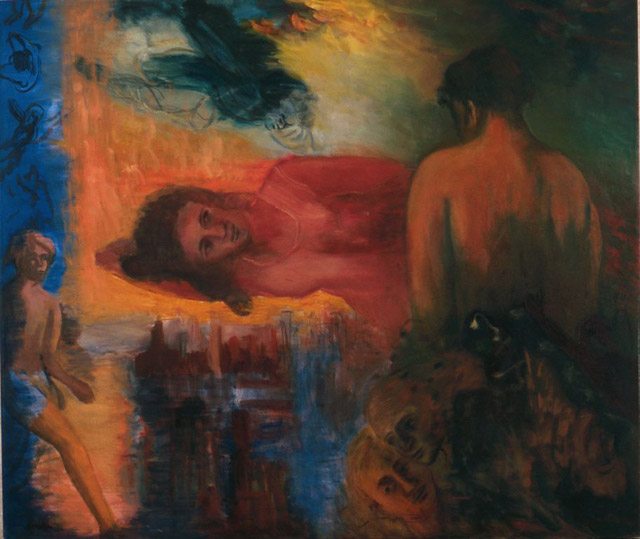
Umesh also found art in a roundabout way. He came to the U.S. as a graduate student for a Ph.D in chemistry, worked for Johnson and Johnson and was on the faculty of Princeton for a number of years before he started Gaur Asset Management.
“As a student I used to collect art posters and would go to the museums to see what the original art was really like and found that to be fascinating,” he recalls. “After a time, the question was what do these things cost – and I found a Picasso was several hundred thousand dollars. And I thought this is something I’ll have to wait a long time to buy!”
In the 80’s, Umesh encountered M.F. Husain in a restaurant in Delhi and was intrigued by the silver-maned artist and even more so when his brother told him that Husain had had a joint exhibition with Picasso. The Gaurs bought their first work of art, Mother by M.F. Husain, about ten years ago – and the collection has grown to take over their house!
“Umesh was the one who got interested first,” concedes Sunanda. “ But it really grows on you! It’s been a huge learning experience – and it’s so fascinating – it’s a totally different field from what I do day-to-day. It’s relaxing and I love the learning aspect of it.”
Indeed, Sunanda’s work is so stressful that art is a wonderful window to a different world. She says, “My work is very intense. I’ve been working with pediatric AIDS since the 80’s – in fact, ours is one of the oldest programs. In the beginning the kids used to die, though now it’s a little bit better. But you know, art just takes you away from that – it’s so hard otherwise to detach yourself from that kind of work.”
The Gaurs have slowly built up their collection, largely by buying pieces at Sotheby’s and Christie’s, as well as traveling to auctions in the U.K. They prefer to buy their art at auctions, rather than in India, because of the convenience. Umesh says, “My impression is that art is just a little bit more expensive in India and the reason is that a lot more people are looking for art in India as compared to the competition here. In India when a significant piece comes to market – everyone wants it, which is not the case in the U.S.”
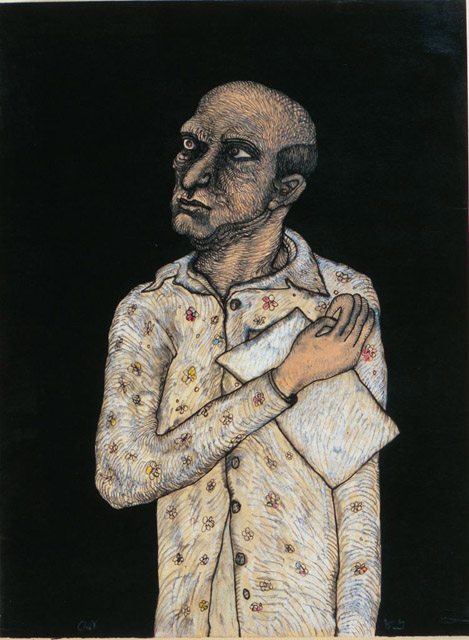
The collection has over a hundred paintings, representative of the entire gamut of contemporary art.Says Umesh: “We love Souza – we find his work very powerful, very provocative and very energizing. We also have a number of still lifes by Ara. Everyone loves Husain’s work – and we are no exception.”They have acquired over a dozen Husains over the years and also have works by Raza, Krishen Khanna, Ganesh Pyne, Nalini Malani and Ram Kumar, to name a few.
“We think of our art collection as a total entity – we have balanced our collection amongst artists who work on paper, canvas, oil and watercolors, and we have works by older and younger artists – so it’s a fairly comprehensive collection,” says Umesh.
Sunanda may have got interested later but is now totally into collecting for as her husband points out, “ It’s a joint partnership. Every piece we buy, we discuss it together and we have our own favorite pieces. It’s very much a joint collection at this point.”
Keen to share their interest with a larger audience, the Gaurs contacted Zimmerli Art Museum, which is their neighborhood museum in New Brunswick. The curators were very impressed by the collection and since Middlesex County has a sizable Indian-American community, the museum decided to do a show of 20 collectors – the largest exhibition of contemporary Indian art outside of India.
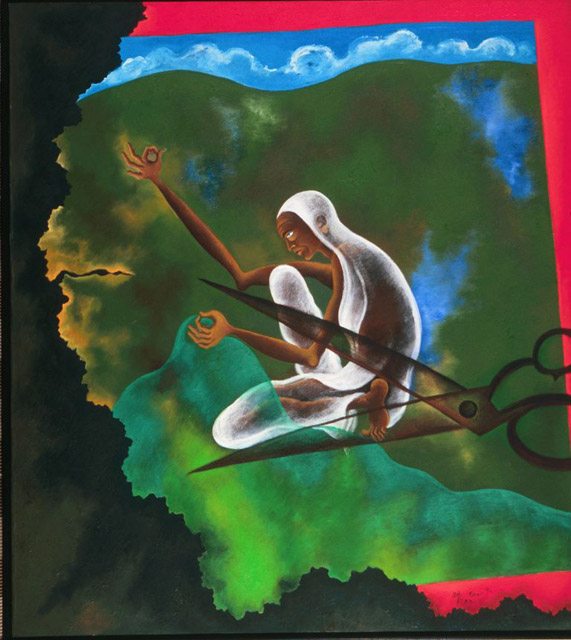
This well-attended show was very successful with a lot of media coverage, and the Gaurs followed it up by lending their collection to the Paul Robeson Gallery for yet another show. One thing is certain – a lot of Americans got their first taste of contemporary Indian art through these shows.
For the Gaurs, it’s almost like sending a well-loved child out into the world, when the paintings are loaned out. “A lot of our pieces are traveling, so we are beginning to miss them and looking forward to them coming back!” says Umesh. Living with a hundred paintings means they are on the walls, under the bed and in the basement too.
They are now looking for an art storage place so that they can keep the art in the right temperature and humidity. But they do enjoy having the pieces at home. If you’re a first-time visitor to the Gaur home, and you innocently point to a picture and ask, “Is that a Husain?” – you’re in for an hour’s tour of the house, and details about how each painting was acquired and the stories behind it.
“We spend a lot of time moving our paintings from one spot to another – our kids think we are crazy!” laughs Sunanda. “We love doing that – it just comes alive!The pieces look different in different venues, even within the house. You could have a painting in one spot and after a while you stop seeing it because it’s just there. And then you change its location and you see it with fresh eyes.”
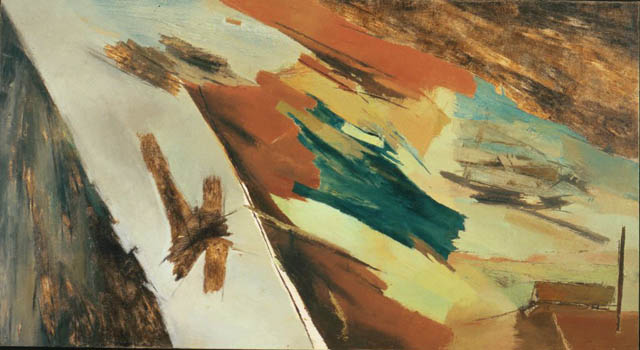
One of the joys of being a collector of contemporary art is that you get to meet a lot of the artists, and the Gaurs have built up connections with artists like Arpana Caur, Ram Kumar and Sudhir Pathwardan. Says Umesh, “When that happens, you get to know the artist and what he’s thinking and that’s an enjoyable experience.” Both have their favorites and Sunanda is especially intrigued by the women artists.
For the Gaurs, their art collection has had some hidden bonuses. It’s been a great learning tool for their daughters Reva and Priya, who grew up with the art around them. So in spite of growing up in an American suburb, they are able to relate to India through contemporary art. In fact, their classmates went on a school trip to the Zimmerli show and were tickled to learn that so many pieces belonged in the Gaur home.
Since the collection has vintage works from the 60’s and 70’s right up to the present, it is almost a graph of an artist’s evolving work. The Gaurs have been collecting for a decade and have never sold any of their pieces. Umesh estimates that the collection is worth several million dollars but the value is far more than the price. After all, what can be a bigger thrill than to break the stresses of the workday by stepping out of the office to gaze at Raza’s peaceful, meditative Bindu?
Both Umesh and Sunanda are particularly animated by the chance to showcase their art to a larger audience. “What I love is the opportunity to raise other people’s awareness of what Indian art is all about in the contemporary sense,” says Sunanda. “Both of these shows were university shows so there was a lot of exposure to faculty and students at both the campuses. People came with no idea of what to expect and some have been inspired to start collecting themselves.”
Art is also Sunanda and Umesh’s way of keeping in touch with a homeland that was fast slipping out of their hands with the passage of time. It has opened new avenues, new relationships in India for them, and helped them open up a dialogue with Americans.
The rewards of having an art collection are intangible. Says Sunanda, “The art, of course, is enjoyable but it’s more enjoyable when you can share it with others. It’s just worth sharing with everyone – it’s meant to be shared.”
© Lavina Melwani
Photographs courtesy: The Gaur Collection
